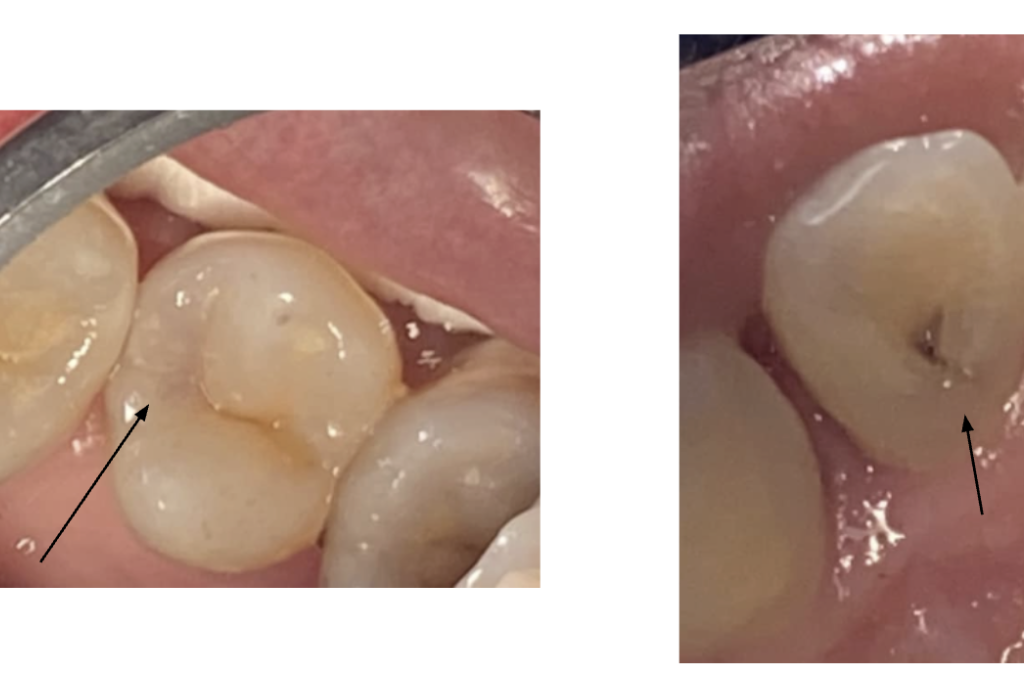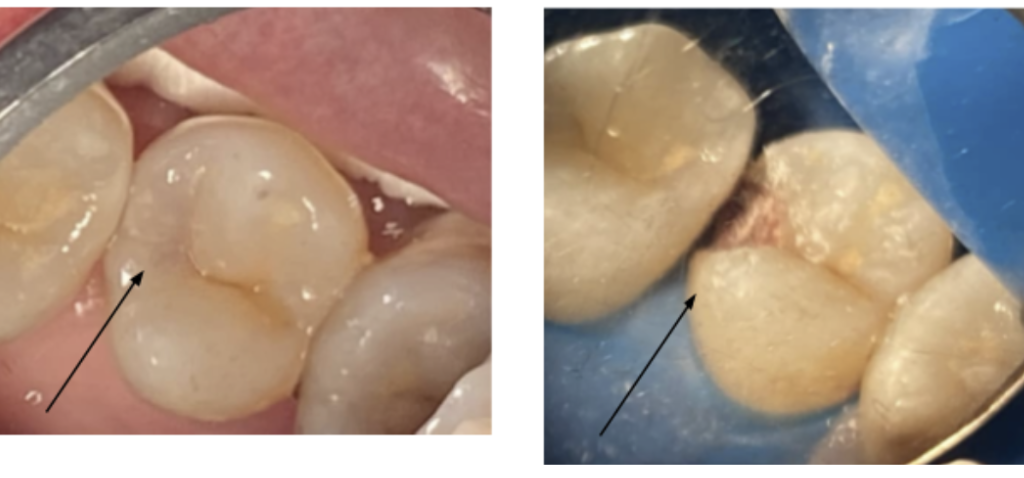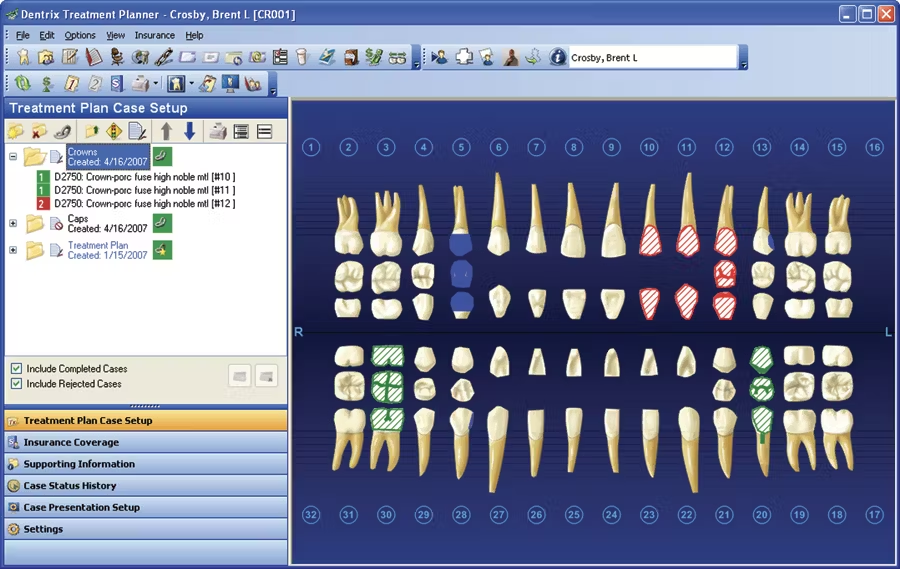In dental school, clinicians are already made aware that there is no undo button once the tip of our rotating bur touches the irreplaceable enamel. The patient will then enter the never-ending dental cycle, a cascade of restorative cycles, that will cost them a lot of money, and sometimes, the demise of their tooth.
Image Source: https://in.pinterest.com/pin/861454235008707321/
Preventive Dentistry has now been the most ideal way to treat patients. Most dentists are taught to have a more conservative approach to treating dental caries. Unfortunately, the pre-existing caries assessment methods are not aligned with this method. Hence, the development of ICDAS.
What is ICDAS classification?
ICDAS or the International Caries Detection and Assessment System is a visual assessment for carious lesions alongside a wider, patient-level information to plan, manage, and review dental caries. It was developed by the ICDAS Foundation Coordinating Committee in 2002.
In simple terms, ICDAS is a system used to classify dental caries based on what the clinician observes during an intraoral examination. This system involves scoring the condition of tooth as to how sound or how damaged it is.
The vision of ICDAS that was agreed on during the July 2011 ICDAS Review held in Kauna, Lithuania released in the 2013 article of NB Pitts and KR Ekstrand on behalf of the ICDAS Foundation were as follows:
ICDAS: employs an evidence-based and preventively oriented approach
ICDAS is: a detection and assessment system classifying stages of caries process
ICDAS is for: use in dental education, clinical practice, research, and public health
ICDAS provides: all stakeholders with common caries language
ICDAS has evolved: to comprise a number of approved, compatible ‘formats’
ICDAS supports decision making: at both individual and public health levels
ICDAS has generated ICCMS to enable: improved long-term caries outcomes
What is ICDAS code 0?
ICDAS code 0 (Sound Tooth Surface) means that the tooth surface has no evidence of caries after prolonged air drying (5 seconds).
You will also put an ICDAS code 0 for teeth with defects (enamel hypoplasia, fluorosis, tetracycline stains, tooth wear, extrinsic and intrinsic stains due to non-carious habits) as these discolorations are not caused by caries activity.
Here are some examples of teeth surfaces with ICDAS code 0:
What is ICDAS code 1?
ICDAS code 1 (First Visual Change in Enamel) means that the tooth surface, when it is wet, has no evidence of any change in color. However, after prolonged air drying, carious opacity or discoloration (that is not consistent with a sound enamel’s clinical appearance) is visible.
Here are some examples of teeth surfaces with ICDAS code 1
Image Source: https://www.atlasdental.ca/white-spot-lesion/
What is ICDAS code 2?
ICDAS code 2 (Distinct Visual Change in Enamel) means even when the tooth is wet, carious opacity and discoloration (white/brown/black spot lesions) are already visible. These discolorations are also evident even if you have already dried the tooth surface.
Here are some examples of teeth surfaces with ICDAS code 2
What is the difference between ICDAS code 1 and ICDAS code 2?
A part of ICDAS scoring is checking the tooth surface before and after prolonged drying. The difference between ICDAS code 1 and ICDAS code 2 is that if the discoloration on the enamel only appears after it has been air dried for 5 seconds, it is an ICDAS code 1. If the discoloration appears even before you expose the tooth surface to air, it should be marked as ICDAS code 2.
What is ICDAS Code 3?
ICDAS Code 3 (Localized Enamel Breakdown Due to Caries with No Visible Dentin or Underlying Shadow) means even when the tooth is wet, a frank carious opacity and discoloration (white/brown/black spot lesions) wider than the original fissure or a slight break in the enamel is already visible.
Bear in mind that from ICDAS Code 0 to 2, the integrity of the enamel surface is intact. However, ICDAS Code 3 is given when a slight crack or hole on the enamel surface is already felt.
To confirm such classification, a WHO/CPI/PSR probe is slid gently across the tooth surface to check for a limited discontinuity or a slight drop.
Remember that for ICDAS Code 3, you have discoloration when the tooth surface is either dry or wet AND there is a slight break on the enamel.
Here are some examples of teeth surfaces with ICDAS Code 3
Image Source: https://pocketdentistry.com/12-diagnosis-and-management-of-dental-caries/
What is ICDAS Code 4?
ICDAS Code 4 (Underlying Shadow from Dentin with or without Localized Enamel Breakdown) is a tooth surface’s classification if you see an intrinsic shadow appearance when the tooth is wet.
It may or may not show signs of localized enamel breakdown as the shadow may be seen underneath the pits and fissure, but once you see a shadow beneath it, you have to classify it as an ICDAS Code 4.
Here are some examples of teeth surfaces with ICDAS code 4

What is the difference between ICDAS code 3 and ICDAS code 4?
Both ICDAS code 3 and 4 includes a localized enamel breakdown, but when you see that there is a greyish/bluish/purplish shadow that seemingly emanates from it, you can assume that the lesion is an ICDAS Code 4.
In the first picture, the tooth looked like this after excavation:

There isn’t even a frank cavitation on the surface of the tooth, but upon removing the undermined enamel, that is what it looked like underneath.
What is ICDAS Code 5
ICDAS code 5 (Distinct Cavity with Visible Dentin) means that a tooth surface has a cavitation in opaque or discolored enamel that is exposing the dentin beneath. When the tooth surface is dry, you see a frank cavitation. When the tooth surface is wet, you see a darkening of dentin visible throughout the enamel.
When you slide your ball-end probe on the tooth surface with ICDAS code 5, you can already feel that it gets lodged inside the broken down enamel surface.
Another easy way to remember an ICDAS code 5 tooth surface is when you can already visibly see a cavitation but its size is less than ½ of the entire tooth.
Here are some examples of teeth surfaces with ICDAS code 5
What is ICDAS Code 6?
ICDAS Code 6 (Extensive Distinct Cavity with Visible Dentin) is very easy to detect. When you see a huge carious cavitation on the tooth surface that involves at least half of the tooth surface and it probably reaches the pulp already, it is an ICDAS Code 6.
What is the difference between ICDAS code 5 and ICDAS code 6?
ICDAS codes 5 and 6 are obvious cavitations seen on the tooth surface, but ICDAS code 5 is given to a carious cavitation that extends to less than ½ of the tooth surface. On the other hand, ICDAS code 6 is given to carious cavitation that extends more than ½ of the tooth surface.
How to do ICDAS scoring?
These are the steps in doing ICDAS scoring:
- Isolate the area using cotton roll isolation.
- Observe the tooth while it is wet.
- Dry the tooth for 5 seconds.
- Check for any discoloration or local enamel breakdown.
- Using a ball-end probe, confirm any local enamel breakdown on the tooth surface.
- Record your observations.
- Repeat the steps 1-6 for the rest of the surfaces of teeth.
In Conclusion
The advent of ICDAS marks a pivotal shift in the way dental professionals approach caries detection and treatment planning. No longer bound to the traditional “drill and fill” mindset, clinicians are now equipped with a more nuanced, evidence-based framework that promotes early diagnosis and preventive care.
By enabling dentists to identify and monitor carious lesions at their earliest stages—long before invasive procedures become necessary—ICDAS empowers a more conservative and patient-centered model of care.
As future dental practitioners, embracing ICDAS not only preserves tooth structure but also upholds the core philosophy of minimally invasive dentistry. Indeed, the decision to “not drill” can often be the most impactful treatment of all.
References:
https://www.iccms-web.com/content/iccms-usage/clinical-practice




Beşiktaş su kaçak tespiti Kalamış su kaçağı tespiti: Kalamış’ta su kaçaklarına teknolojik çözümler. https://direc.ircg.ir/author/kacak/
Gümüşyaka su kaçak tespiti Bulgurlu su kaçağı tespiti: Bulgurlu’da su kaçağına anında müdahale. http://ruffeodrive.com/?p=34462